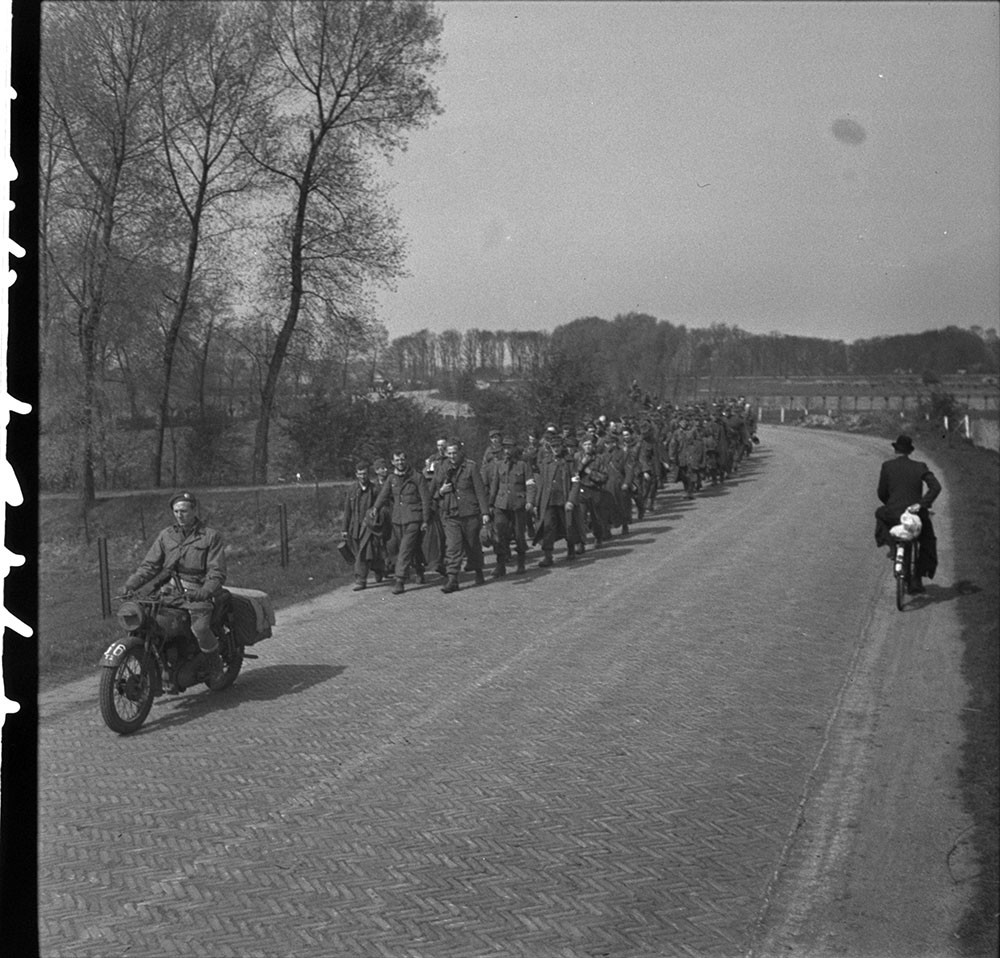It is April 14, 1945. The Canadians have been ordered to capture the heavily defended railway bridge and road bridge over the Oude IJssel. The railway line between Zutphen and Apeldoorn marks the boundary for the advance of two Canadian infantry brigades along the western bank of the IJssel. This mission also serves as a diversion so that other Canadian forces can launch an attack on De Hoven. Around half-past six in the morning, the first Canadians arrive within 750 meters of the railway bridge. About 200 meters from the bridges, the Germans have entrenched themselves along the railway embankment. This is a strategic location, as the embankment is the only elevated point in the area. From this position, the Germans direct their machine gun and mortar fire at the Canadian troops. Canadian artillery comes to the rescue and targets a house on Hezeweg, west of Empe, where Germans are believed to be hiding.
The progress is so slow that Lieutenant Colonel James Riley Stone receives reinforcements around noon. Under the leadership of Lieutenant John Lester Herman, the Canadians advance towards the railway crossing at Hezeweg. Realizing the importance of this task, Lieutenant Herman stands up and leads his men in a daring attack across open terrain under deadly fire, successfully capturing the position. Immediately, a series of three German counterattacks follows. Carefully, Herman leads his men forward until they are only fifty meters from the Germans. His calmness and skill inspire his men to repel the counterattacks, resulting in at least thirty German casualties. The battle enables the Canadians to reorganize. For this action, Lieutenant Herman is awarded a Silver Star.
There are also many casualties on the Canadian side. Evacuating the wounded is difficult as vehicles marked with the Red Cross are also being shot at. During the fierce fighting, Corporal Ramsey Alexander Monaghan goes around providing first aid and retrieving the wounded. According to the recommendation report for the Bronze Cross, "his repeated appearance with his Bren carrier amidst the fighting and his smile and humor were an inspiration to everyone." Corporal Arthur Wellington Robinson and his men come under fire from three sides by German anti-tank weapons and machine guns. Thanks to the cover provided by a smoke screen from section leader Daniel Dodd, they manage to retreat.
The regiment's attack has stalled while the bridges remain in German hands. Now, Stone takes over the attack. Having gained a reputation for leading from the front early in the war as a sergeant, Stone deploys three flamethrowers that, in his own words, "shot fire over the canal (...) and caused a terrible mess." This enables Robinson to resume the attack, fighting their way towards and capturing the railway bridge. Then, with nine men, they head towards the road bridge. In total, twenty-four Germans are killed, and nineteen are captured.
At the same time, Dodd and his group come under heavy fire. He decides to launch an unexpected attack with his remaining three men across the open terrain. The Germans are completely overwhelmed: fourteen are taken prisoner. Finally, the bridges are in Canadian hands. For these heroic actions, Dodd and Wellington receive the Dutch Bronze Lion award. Stone receives a clasp on his Distinguished Service Order (DSO) which he had previously been awarded during the fighting in Italy.
